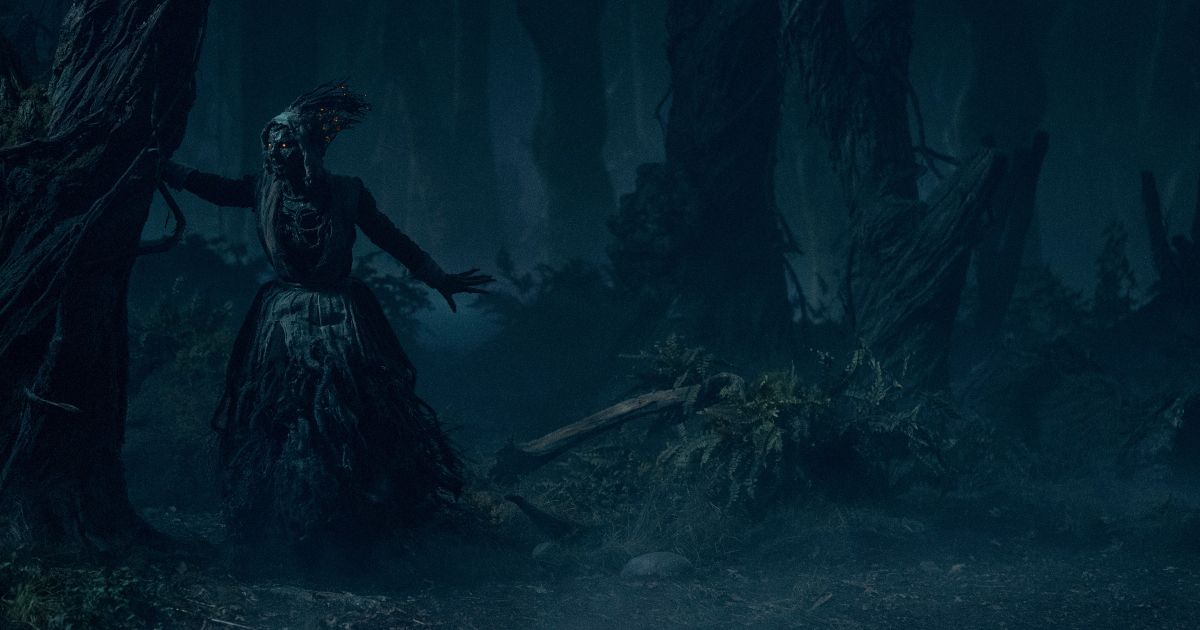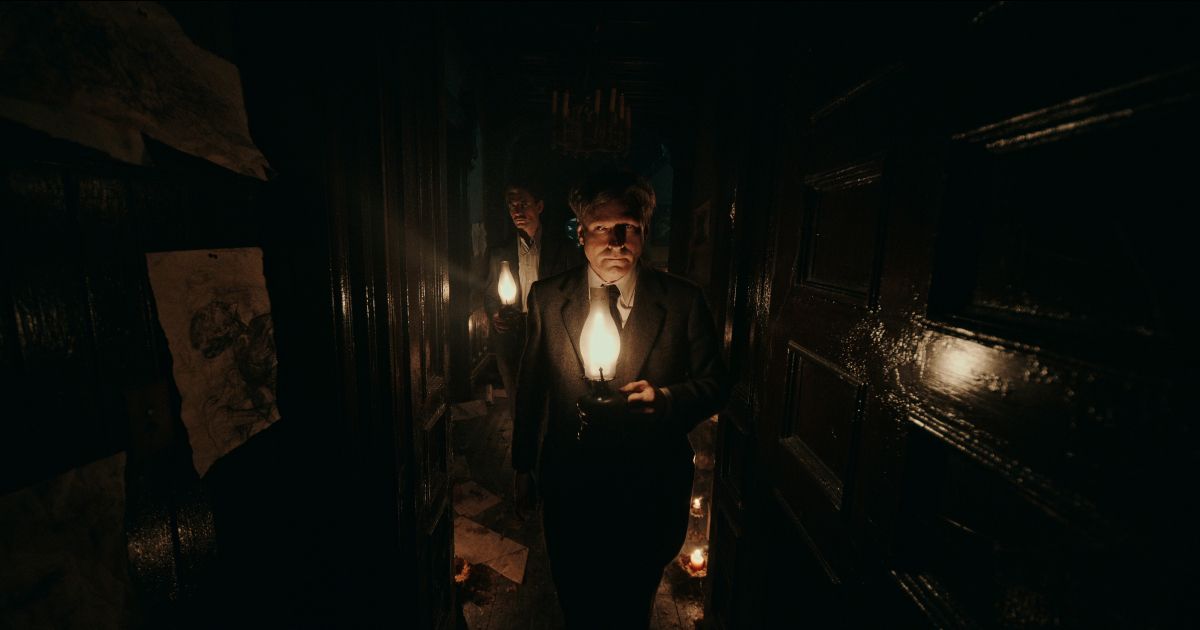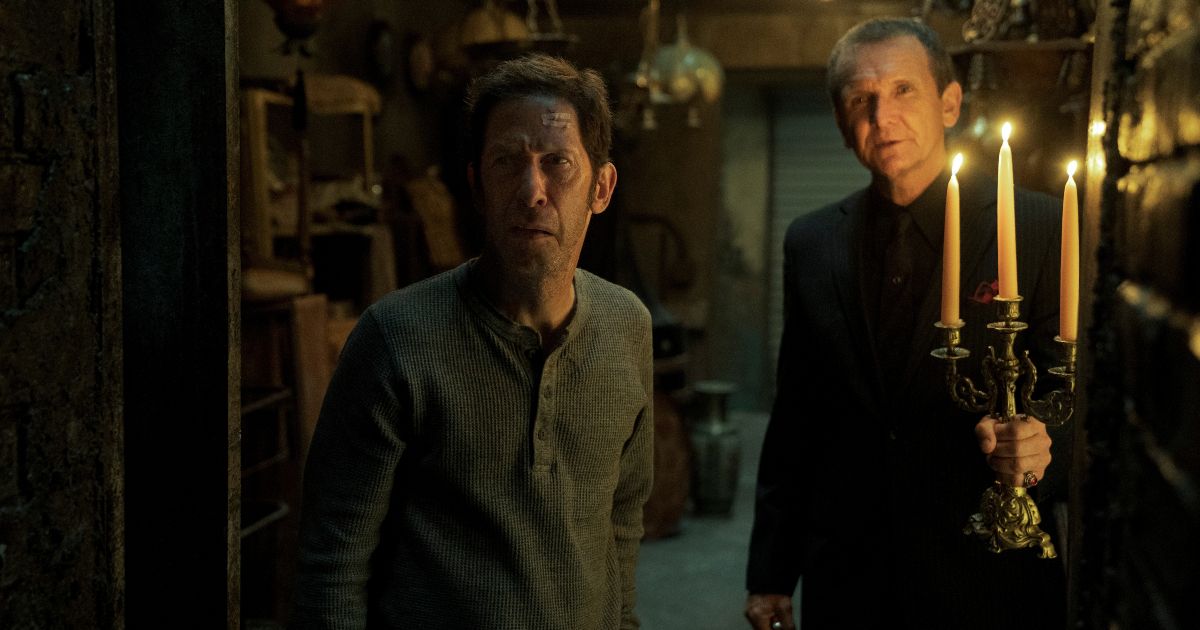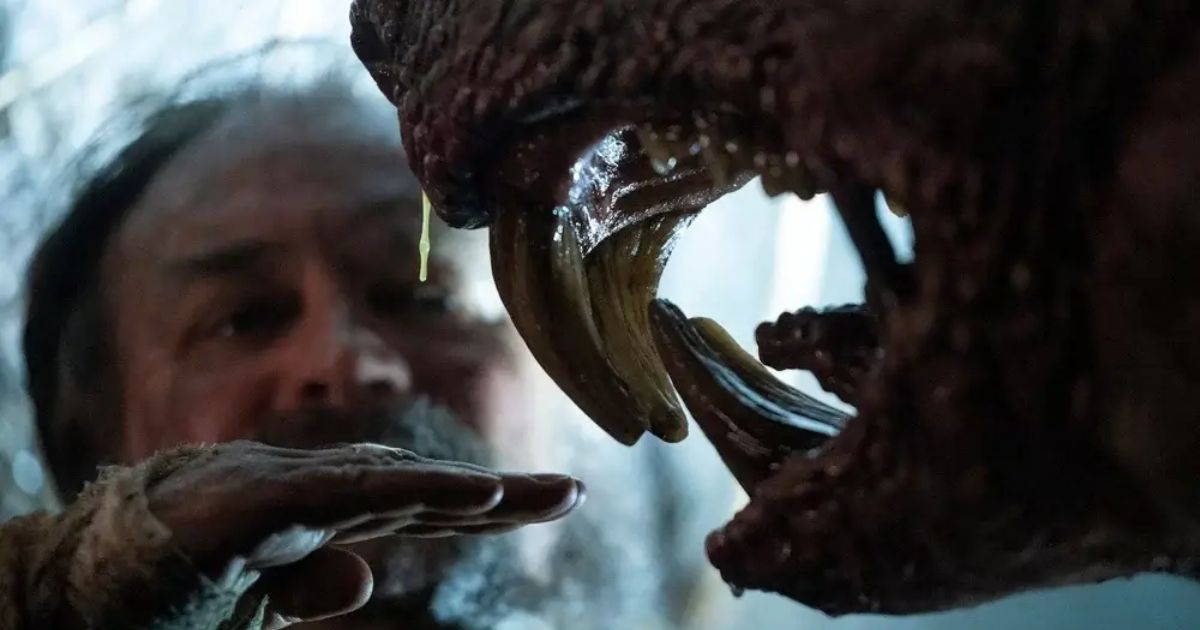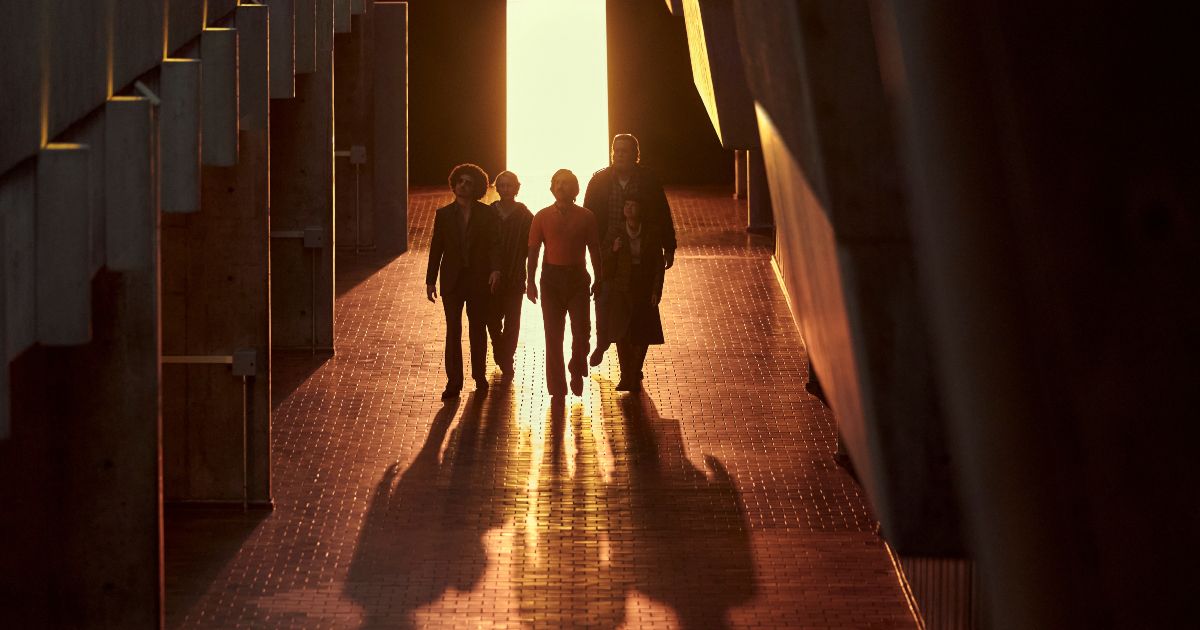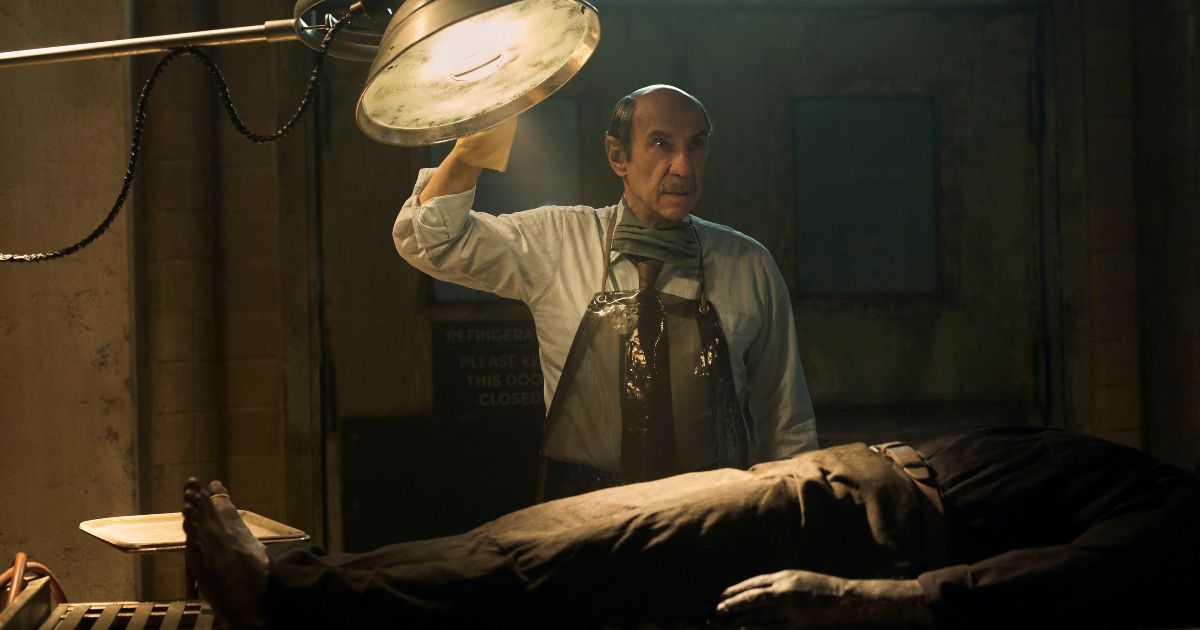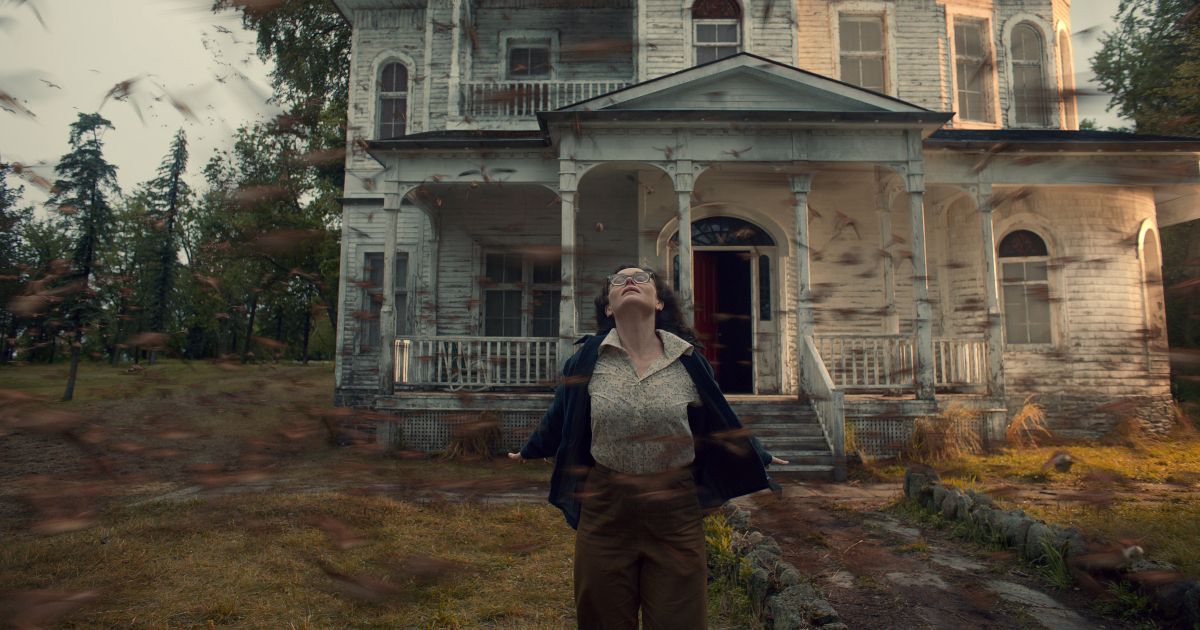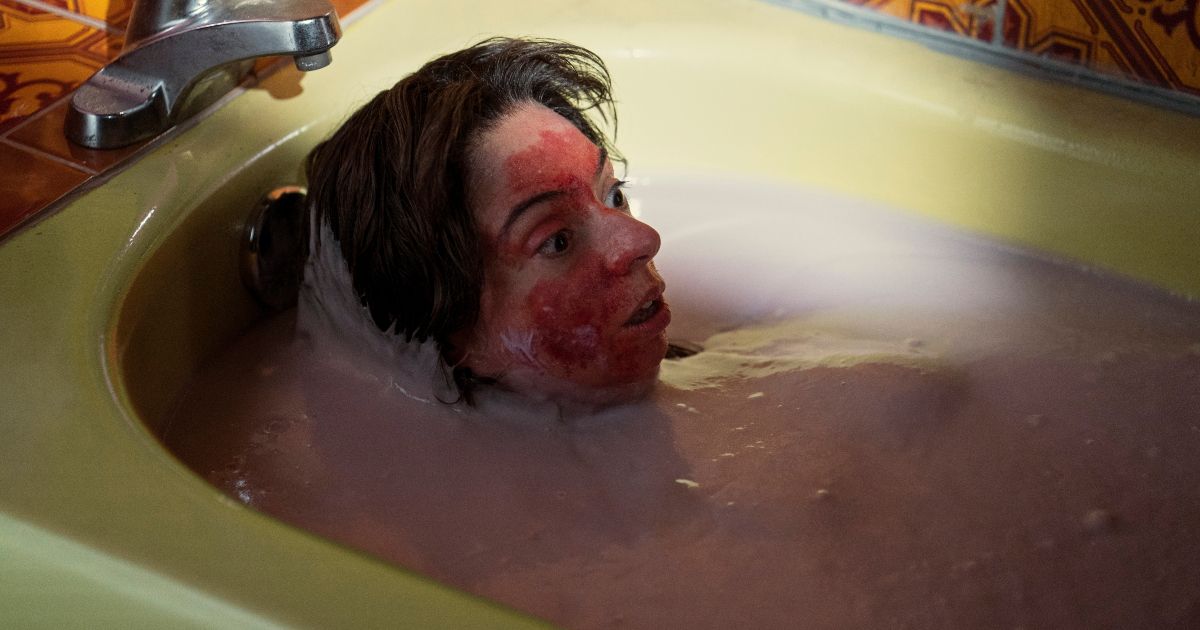Guillermo del Toro’s latest love letter to the horror genre comes with some very expensive postage. Cabinet of Curiosities isn’t exactly unique in its approach, as it is the most recent in a long line of TV horror anthologies, a medium in which there has been renewed interest for the better part of the 2010s. But what sets this Cabinet apart is a unity of vision and some seemingly bottomless wallets – for the first time in at least a very long time, the horror anthology becomes a true vanity project, and not one that navel-gazes but instead serves to delight, entertain, and immerse.
Even in its most flawed entries, Del Toro and his stable of hired hands are aiming for the cosmos, with detailed, carefully crafted production design, moody color grading, and off-the-wall special effects. Cabinet of Curiosities is a rotating panel of prestige, gross-out horrors, and while that is sometimes less interesting than the more subversive, restrained, or ambiguous entries in the genre, it is no less magical and rapturous. It all goes to show what a little more money and a lot more creative intentionality can do to create mainstream horror that is both monstrous and memorable. Here's a look at every episode, ranked.
8 Dreams In The Witch House (Catherine Hardwicke)
Adapted from an H.P. Lovecraft short story, Catherine Hardwicke’s “Dreams In The Witch House” initially begins with more promise than its preceding episode, “Pickman’s Model” (also incidentally based on Lovecraft). The director of Thirteen and the original Twilight brings us a creepy and intriguing Massachusetts-set tale of a man (a suitably disheveled Rupert Grint) trying to reconnect with his long-deceased sister; amidst his misguided attempts, he decides to rent a room in the haunted Witch House, which is basically Bad Vibe City.
There is no shortage of creepy atmosphere and stunning world-building here, with Hardwicke and the production team doing their utmost. The unfortunate downsides are some one-dimensional characters and unearned emotional stakes. Up to this point in the series (this is episode six), despite its lofty Hollywood gloss, Cabinet of Curiosities’ characters have felt human and their motivations decidedly complex. Protagonist Walter Gilman, on the other hand, feels driven more by the narrative than by his interior, though by no fault of the actor (and it does make us yearn for Grint’s savage, fidgety turn as Julian Pearce in Apple TV’s Servant).
The funny and gifted Nia Vardalos is in one and a half scenes as possible psychic Madame Levine (no intended relation to Maroon 5’s lead singer) and has no bearing on the rest of the story. DJ Qualls is entertaining, but unrecognizable, as Jenkins Brown, a half-man-half-rat who feels like some twisted descendant of Gilbert Gottfried’s Iago from Aladdin. And Tenika Davis and Diane Johnstone’s characters feel like they were written in the van on the way to set. Overall, there is fun to be had here, and Hardwicke doesn’t take things too seriously, but it is shallow water compared to the depths probed by the other Curiosities.
7 Pickman’s Model (Keith Thomas)
It’s probably no accident that the series’ two least successful entries are those taken from the Lovecraft catalogue. The playfulness and experimentation present in the other six are conspicuously absent here. Perhaps Del Toro and company hold a certain reverence for the author, his writing being so influential and his name being the most well-known of all whose works are being adapted – the problem, though, is that Lovecraft's stories are notoriously abstract and spend a long amount of time describing how indescribable something is.
Keith Thomas’ “Pickman’s Model” skews more toward the thematically and intellectually interesting than Hardwicke’s “Dreams,” which leans more in the direction of emotionally engaging the audience. Westworld’s Ben Barnes plays an art-student-cum-tastemaker named Thurber who, upon encountering the disturbing work of fellow art student Pickman (Crispin Glover), becomes plagued by ghosts and dark visions.
Glover offers up one of the most creepy, yet sensitive, performances across all eight episodes, with a rictus grin that would feel right at home in the movie Smile, and an old-timey Boston accent that seems ripped straight from Saturday Night Live. (In fact, the Cabinet is full of strange voices and over-the-top accents.) Overall, it’s an atmospheric, even provocative, exploration of madness and artistic genius, but it is kept earthbound by an utter deference to Lovecraft’s original text and is out of touch with its own ridiculousness.
6 Lot 36 (Guillermo Navarro)
Untethered to Lovecraft, the Cabinet’s stories demand less gentility and reverence. So setting aside those two middle volumes, the series becomes more fallible, uneven, and exciting. The first episode, “Lot 36,” is a storm of imperfections and a wallop-y, bold intro to the series. Directed by prolific cinematographer Guillermo Navarro (Pan’s Labyrinth, Jackie Brown), it follows Tim Blake Nelson in a role that could have been written especially for him: Nick Appleton, a disgruntled, racist army vet who inherits an out-of-use storage locker with a mysterious past.
Part of the problem with “Lot 36” is its opening act, which hammers home its Bush-the-First setting multiple times within the first ten minutes. When a horror film makes such a big to-do of establishing its era, it ends up putting politics front and center rather than letting it fill in the cracks behind the narrative. Nelson’s character is surely a scumbag, but we don’t always need hardly codified reasons for such things. It’s almost as if del Toro and Company are afraid we won’t believe Appleton to be a real person if they don’t explain him.
Once the table-setting is finished, however, “Lot 36” becomes a fast and funny horror classic, with a finale that ties everything together really nicely in a way that will have the audience talking.
5 Graveyard Rats (Vincenzo Natali)
Cabinet’s second episode, “Graveyard Rats,” wears its old-Salem setting on its sleeve. And it might be hard to believe at first that it’s made by Vincenzo Natali, the same guy behind Cube, but by the time you reach the end, it will all make perfect sense. Like many of the great horror works, this is a children’s story for adults. It follows David Hewlett as graverobber Masson, desperate to pay off his debts, in pursuit of one last piece of invaluable treasure that will make him whole. Of course, it’s always the “last heist” which goes downhill the fastest.
On one hand, we’ve seen these kinds of Gothic stories before. Typically, such stories (as also seen in the Lovecraft episodes) have a difficult time both setting up and maintaining interest. But while we might not exactly buy Masson or feel invested in his world, the story takes off once so-called “civilized society” is left behind. Here, in the story’s final two-thirds, Masson’s plight becomes funny, primal, and terrifying, like The Descent as reinterpreted by Charles Dickens.
4 The Viewing (Panos Cosmatos)
For first-time audiences, the Cabinet’s penultimate episode is most likely its biggest-ticket item, and in certain respects, that is an accurate assessment. “The Viewing,” directed by the playful and provocative Panos Cosmatos (Mandy), is, without a doubt, the most visually distinctive of all the entries. Shot in Cosmatos’ signature VHS-to-35-millimeter register, this volume follows a ragtag group of prominent public figures who are summoned to the post-neo-modernist mansion of a mysterious benefactor (Peter Weller of RoboCop). Included among the party are guests played by Steve Agee, Eric André, and Michael Therriault. Most notable, however, is Charlyne Yi’s space-obsessed physicist, whose quippy energy is the most pitch-perfect antidote to Cosmatos’ languid style.
“The Viewing” is a masterpiece of idiosyncratic filmmaking, but its success in other areas remains to be seen. The mystery here is absolutely tantalizing and Weller plays very convincingly into the enigma of this dubious gentleman, who feels like a Bond villain of yesteryear. The question is whether the film can satisfyingly resolve these mysteries, or if it even matters. Let’s just say that from a narrative point of view, the wrap-up leaves some things to be desired. But “The Viewing” is not so much about the destination, or even the journey for that matter; it is about the feeling of driving on the road to nowhere.
3 The Autopsy (David Prior)
The best pieces of horror also happen to be mysteries. And nothing among Cabinet of Curiosities scratches that itch in quite the way that “The Autopsy” does. Directed by David Prior (The Empty Man), the story concerns a series of strange deaths inside a coal mine; Glynn Turman’s Sheriff Craven brings F. Murray Abraham’s coroner Carl Winters to town to investigate. Based on a story by Michael Shea, “The Autopsy” is largely a two-hander between these characters, consisting of long conversation scenes and monologues. Though verboseness is normally the enemy of horror, the dialogue (courtesy of prolific screenwriter David S. Goyer) does such a good job of expressing character that it almost doesn’t matter.
“The Autopsy” does not lack for specificity in its visual style either. It is beautiful to look at, and the dark, saturated tones are otherworldly but realistic, helping to complement the noirish flavor of the language. Your mileage may certainly vary on the ending, but the indisputable point is that this thing commits. And F. Murray Abraham is singular in bringing this theatrical, but masterful, dialogue to life. It’s a solid slice of horror, but it’s also a worthwhile lesson in character writing and performance.
2 The Murmuring (Jennifer Kent)
You might not find “The Murmuring” to be the most groundbreaking horror film of all time. It’s certainly well-trodden ground for Australian director Jennifer Kent, whose film The Babadook already brought us a deeply felt meditation on grief through the lens of the horrific. This is yet another story that combines a haunting with explorations of grief and a lead performance from Essie Davis. It isn’t the most exciting and ostentatious of all the Curiosities, but it's still one of the best.
Davis plays Nancy Bradley, an ornithologist who goes with her husband Edgar (also an ornithologist, played by Andrew Lincoln) to study the flight patterns of dunlins in a dreary, remote getaway; they are still processing and coping with a recent loss. The scares aren’t the main focus here, as “The Murmuring” is more so a relationship drama that overlaps with horror. But while it is presented without irony or over-the-top cinematic showmanship, this doesn’t mean that it isn’t scary. In fact, there is something about the loneliness of the location and the tenderness of the central couple that creates an emotional investment in the terror, which many of the other episodes lack despite their ingenuity.
As with The Babadook, this final Curiosity isn’t exactly the first one you’ll want to re-watch, because it isn’t as fun. But perhaps “fun” isn’t necessarily a priority for director Kent, and perhaps that is okay. “The Murmuring” fits as a somber, moving coda to the season.
1 The Outside (Ana Lily Amirpour)
In the opening two-thirds of “The Outside,” you might be scratching your head as to where the whole thing is going. The story, following a dissatisfied bank teller living in middle America (an unforgettable Kate Micucci), seems like a pastiche of The Stuff, Requiem for a Dream, and … Amélie? Anyway, this strange combination of social commentary and gross-out horror threatens to feel trite and heavy-footed until its final act when it comes totally and utterly unhinged.
Director Ana Lily Amirpour (A Girl Walks Home Alone At Night) is not known for subtlety in her filmmaking, and in fact, can sometimes be accused of making work that is, per the classic term, “style over substance.” However, this is an oversimplification, especially when it comes to “The Outside,” which feels so over-the-top that it effectively transcends its over-the-top-ness. The thing is designed and scored within an inch of its life, makes extensive use of assaultive techniques like fish-eye lenses, and puts its two leads (Micucci and a fantastic Martin Starr) through the emotional and physical ringer. The cherry on top of this explosive ice-cream sundae is Dan Stevens, who wields an accent that is so bizarre and inconsistent that it must be a completely intentional choice.
“The Outside” is horrifically fun and also deeply upsetting – a Lars Von Trier movie fed through a Lady Gaga music video generator. And it is the best, and most instantly iconic, in the entire Cabinet of Curiosities.

.jpg)
